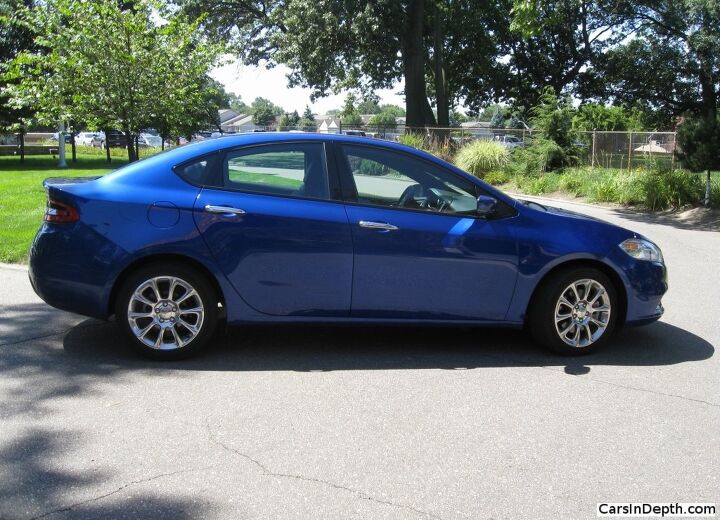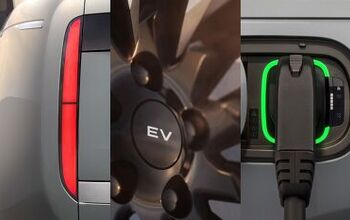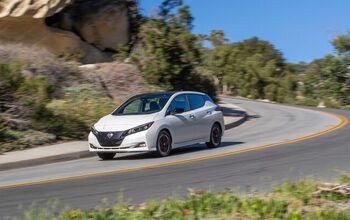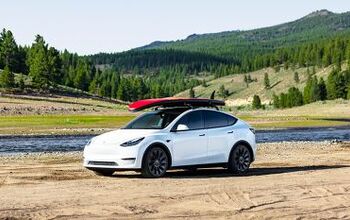Car Review: A Tale of Two Darts, Part the First – 2013 Dodge Dart Limited 2.0 L

A while back Chrysler loaned me a Dodge Dart Limited with the 2.0 liter Tigershark engine and six-speed automatic transmission for the purpose of writing a review. That’s how it works, they loan you the car, you write the review. A social contract, if you will. In this case, however, though I drove the car for a week and took scores of photos and copious notes, I decided not to write the review at the time. That sort of behavior comes with some risk, particularly if the next time you ask for a press car and they ask for a link to your last review. I had my reasons for putting off the review, and now that I’ve driven a Dart with the larger 2.4 liter motor, I’m glad that I waited, and I think Chrysler should be glad that I waited as well.
I’ll explain all that gladness in Part Two, my review of the 2014 Dodge Dart GT 2.4 L, but everything has a backstory.
Why didn’t I write the review? To begin with, I don’t particularly like to say what everyone else is saying, even if I may agree. I don’t need to add my voice to an echo chorus. If I don’t have something original to say, why bother with “me too”?
What everyone else was saying was that the combination of the 2 liter engine with the automatic resulted in rather canine behavior and we’re not talkin’ greyhounds here. The fact that the Dart with the two liter engine and slushbox is a dog has been attested to by most reviewers and it’s hardly any secret with Chrysler folks too. Detroit is a place where you might run into a decision maker in the auto industry at the grocery when out to buy bread and milk for your mom and where the Dart you park next to might very well have been bought by an engineer on an employee discount. Whenever I mention to Chrysler folks about that drivetrain being a slug, they sort of shrug their shoulders and smile sheepishly.
After my week with the Dart Limited 2.0L/6AT, I wanted to check out the Dart with the larger 2.4L engine. Unfortunatley, there weren’t very many of those made in the Dart’s early production mix. That’s another reason why I’ve waited to write this review. I wasn’t sure just how representative the car I tested was of the Darts you’d be able to buy going forward. I knew that months before I got the test car Fiat Chrysler CEO Sergio Marchionne admitted that the 2.0L/6AT and the Fiat 1.4 Multiair Turbo powertrains “were not the ideal solution,” and a company spokesperson said that the production mix would be rebalanced as 2.4 L engine production ramped up at the company’s Dundee, Michigan engine plant. The production mix has indeed changed and the 2.4 liter is now installed in the majority of Darts. The 2.0 liter is now only available in the base SE car and the 1.4 turbo shared with the Fiat 500 is only offered on the Dart Aero. In that sense I was correct, the car that I’m describing to you is not representative of what you can buy. In fact, you can’t even buy a 2014 Dart Limited with the 2.0.
So why write the review now? Well, to begin with the drivetrain is still available on the Dart, if not with the same high trim level. Also, as it turns out, I think the basic car is pretty decent, even better than that, and some buyers, out of a sense of frugality or budget realities, might decide to buy the Dart SE, thinking that they’ll get a nice car, and save money both on the purchase and on gasoline. As you’ll see, though, the 2.0 liter may be a false economy. Finally, reviewing this car puts the upcoming Dart GT review in context and much of this review will also still be relevant to those considering a Dart Limited.
The problem as I see it isn’t how much power that engine has, or doesn’t have. With 160 hp, it’s not going to be a speed demon but under normal circumstances with that much power in a slightly chubby compact car you should be fine in traffic and on the highway. However, every combination of engine and transmission these days seems to be calibrated to yield maximum Ms per G on the EPA test cycle, not maximum driveability. The 2.0L/6AT combination is EPA rated at 25/36 and it seems calibrated to get into the highest gear ratio as quickly as possible, meaning you’re in a higher gear before you ever get to the meaty part of the power curve.
I tend to treat “it was so slow as to be unsafe in traffic” reviews with some skepticism because 20 year old Hondas and Camrys can keep up with traffic just fine, even today when 300+ horsepower cars are commonplace. However, the way the 2.0/6AT combo drove, I genuinely felt nervous when trying to zip into a spot in traffic or when merging onto the freeway. I love a good stick shift, but I’ve never warmed to using paddle shifters or manually shifting with automatic transmissions. I figure that ZF et al know more about shifting than I do. Still, with this Dart I discovered that I had to autostick it to force the car to hold a gear long enough to be able to get on top of it and accelerate safely in traffic.
I also discovered why the transmission and engine are mapped the way they are. Leaving the car to its own devices in mixed suburban driving I was getting an indicated gas mileage in the high twenty-nines, but when I started shifting myself that dropped to about 26.5 mpg.
I really wanted to like the car. Based on the Compact U.S. Wide platform that Chrysler’s engineers in Auburn Hills derived from Fiat’s C-Evo platform first seen under the current Alfa Romeo Giulietta, the Dart feels spacious, at least for front seat passengers. Wide is no misnomer, there’s an airy feel to the cabin from behind the wheel. The belt line sweeps up towards the rear of the car but at the driver’s window it’s almost low enough for resting your elbow. Because of that rising belt line, though, rear passengers might feel a bit more closed in.
Visibility for the driver is pretty good, except for the fact that the hood slopes down sharply and you can’t see the front corners. Sajeev Mehta will rejoice at the Day Light Opening (DLO) win, as small triangular windows behind the rear door glass provide a clear look at your blind spots over your shoulders. They also help keep rear passengers from getting claustrophobic from the high belt line in back. Speaking of DLO, there is some DLO fail around the mirror and A pillar, with a black plastic insert.
Speaking of black plastic, there’s a variety of black colored and textured polymers at play in the interior. Most of the surfaces that you’d come into contact with, though, are of the soft touch kind.
Everything up front was properly ergonomic, with Chrysler’s industry leading 8.4″ UConnect touchscreen well integrated visually with the configurable display that sits directly in front of the driver. I thought the default red color scheme of the liquid crystal displays was a bit garish, compared to the cooler blue scheme on the Chrysler 300S I’d had the week before, but that’s just a matter of personal taste. YMMV. The instrument panel is surrounded by a band of red trim that lights up subtly when the headlights are on. It’s a nice touch in this class of car, providing you like red.
Chrysler is big on their sliding console storage bin in the company’s minivans. I think that’s where they got the idea for a two position armrest on top of the console storage bin. Whichever position you slide it to, when you open it, you’ll find a USB port, a 1/8″ AUX port, and, what is getting to be a rarity these days, a CD drive.
The 60/40 fold-down back seat features a console that flips down from the seat back and contains cupholders and a storage bin. When that console is flipped down, it reveals the hatch for passing though long items that are being stored in the trunk, like skis.
I thought the rear seat was roomy enough but then I’m a 5’6 tall guy with a 28″ inseam. I was left with about 3″ of headroom and about 5″ of knee room. Will it Zayde? Yes, I had no problems getting my grandson’s rear facing car seat in the Dart. There are child seat latch anchors on the back deck for all three rear seat positions.
In Limited trim, the Dart had most of the features most drivers will want, in fact, most of the options offered on the car – it was pretty loaded. With the Technology Group, Premium Group, automatic transmission, UConnect and a few odds and ends, it stickered out to $25,190, including a $795 destination charge.
The seats were full leather and quite comfortable. They feature the now ubiquitous contrasting detail stitching. The passenger seat has a hidden storage compartment under the hinged seat squab for stowing small valuables.
Visually, to my tastes it’s an attractive car, sort of a muscular and squat wedge. Car companies are putting more style into their mass market compact sedans. There’s a lot of sheet metal contouring happening on the hood and around the front end that you probably wouldn’t have seen a few years ago in a class of cars that American’s have considered to be economy cars. On the outside, the Dart looks more expensive than it is.
I like the way the headlamp lenses stand proud of the fender and the rear end goes together in harmony, with an integrated. duck tail spoiler. The rear end also features a version of the Dodge Charger’s brand identifying full-width LED tail-lights. I think that the smarter designers today are using the flexibility of LED and other modern lighting technology to make a brand statement in the dark of night as well as in the light of the day.
Other than acceleration, what’s it like to drive? The Dart wants to handle. Those Alfa genes are strong. The problem is that under normal driving, letting the car shift for itself, the drivetrain’s lack of acceleration compromises the handling. You can dive bomb into a corner and it holds the line just fine, but when you want to power through the exit letting front wheel drive understeer help straighten the car out, there’s just no there there.
At first I was struck at some obvious price-pointing, but I realized that impression was biased by the fact that when they dropped off the Dart, they picked up that Chrysler 300S AWD with a Hemi, a car whose base price is almost double that of a stripper $16K Dart. While there’s indeed $14,000 worth of visible and tactile difference between the Dart and the 300, the Dart feels solid and has a fairly comfortable ride for a compact. The test car was equipped with 17″ X 7.5″ aluminum wheels mounted with 225/45 R17 Continental ContiproContact tires.
There was one visible quality control issue, a surprising one. While doing the photo shoot I noticed something I haven’t seen in a long time, a paint “run”, a drip at least an inch long near one of the rocker panels. I worked at a DuPont automotive paint lab from 1982 into the 21st century and I haven’t seen a visible paint defect that bad since the early 1990s. To be fair, the rest of the paint, and the rest of the Dart seemed to be defect free.
I noticed something else that, no pun intended, touches on quality control, or at least attention to detail, while doing the photo shoot. If you have to open the hood and the engine is hot, make sure that you’re wearing an oven mitt or using something else to protect your hand before you grab the prop rod that holds up the open hood. When stowed, the prop rod sits right above the radiator and it gets very hot.
I had high hopes for the Dart but as equipped with the 2.0L/6AT powertrain it left me disappointed. I thought the revival of the nameplate was brilliant, with many Americans holding fond memories of a reliable, inexpensive compact American car, powered by the almost indestructible Slant Six. I also knew that when they have tried, eg. Neon, the boffins in Auburn Hills know how to make a compact car, even if the company as a whole didn’t quite get the continuous improvement thing. I think that they still know how to make a decent small car, but my first encounter with the Dart suffered from expectations not met. So much so that it was my choice as my least favorite test car of 2013. Yep, not only did I not review a loaned car, I slagged it off at the end of the year. I suppose that also risked some displeasure of the folks in Auburn Hills, but they can’t complain that much since in that same end-of-year wrap up I also said that the Chrysler 300S AWD Hemi was my favorite car of 2013.
Maybe all that stuff about ticking off car companies with negative reviews is a bit exaggerated, because despite doing somethings that wouldn’t necessarily curry favor with them, the folks at Chrysler approved it when I asked the fleet company if they had a 2.4 liter Dart for me to try. We’ll look at that car, a GT model, in Part Two.
Ronnie Schreiber edits Cars In Depth, a realistic perspective on cars & car culture and the original 3D car site. If you found this post worthwhile, you can get a parallax view at Cars In Depth. If the 3D thing freaks you out, don’t worry, all the photo and video players in use at the site have mono options. Thanks for reading – RJS

Ronnie Schreiber edits Cars In Depth, the original 3D car site.
More by Ronnie Schreiber
Latest Car Reviews
Read moreLatest Product Reviews
Read moreRecent Comments
- Varezhka Maybe the volume was not big enough to really matter anyways, but losing a “passenger car” for a mostly “light truck” line-up should help Subaru with their CAFE numbers too.
- Varezhka For this category my car of choice would be the CX-50. But between the two cars listed I’d select the RAV4 over CR-V. I’ve always preferred NA over small turbos and for hybrids THS’ longer history shows in its refinement.
- AZFelix I would suggest a variation on the 'fcuk, marry, kill' game using 'track, buy, lease' with three similar automotive selections.
- Formula m For the gas versions I like the Honda CRV. Haven’t driven the hybrids yet.
- SCE to AUX All that lift makes for an easy rollover of your $70k truck.





















































Comments
Join the conversation
Our rental 2014.5 Camry SE did the 0-60 run in all of 9.2 seconds and was easily able to keep up with traffic. After all this is the best selling car in America and is the volume power train in 178 HP 2.5 automatic form so it must be good enough for most everyday folks. An 8.7 second 2.4 Dart would be an upgrade power wise from that.
Ronnie's photos show other quality gaffes besides the paint run. The 15th photo reveals a sizable gap between the rounded edge of the hood and front fascia that could seemingly accommodate a stuffed business envelope. The gap doesn't look to be repeated on the right side. Yeah, maybe that could be fixed by something as simple as adjusting the hood stop. Or, it could be yet another sign of how little attention is given by Fiatsler engineers and their UAW minions to designing and assembling a halfway decent automobile.